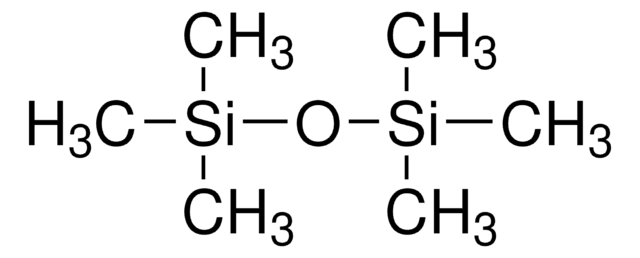DMPS5X
Dimethylpolysiloxane
viscosity 50 cSt (25 °C)(lit.)
Sinónimos:
Polydimethylsiloxane
About This Item
Productos recomendados
form
liquid
mol wt
~3,780
viscosity
50 cSt(25 °C)(lit.)
InChI
1S/C2H6OSi/c1-4(2)3/h1-2H3
InChI key
SEUDSDUUJXTXSV-UHFFFAOYSA-N
¿Está buscando productos similares? Visita Guía de comparación de productos
Application
- in culturing mouse embryos
- in preparation of oil-based nano-adjuvant candidates
- to reduce the brain movement in the post-cat craniotomy process
Biochem/physiol Actions
Storage Class
10 - Combustible liquids
wgk_germany
WGK 2
flash_point_f
609.8 °F - closed cup
flash_point_c
321 °C - closed cup
ppe
Eyeshields, Gloves, multi-purpose combination respirator cartridge (US)
Certificados de análisis (COA)
Busque Certificados de análisis (COA) introduciendo el número de lote del producto. Los números de lote se encuentran en la etiqueta del producto después de las palabras «Lot» o «Batch»
¿Ya tiene este producto?
Encuentre la documentación para los productos que ha comprado recientemente en la Biblioteca de documentos.
Los clientes también vieron
Nuestro equipo de científicos tiene experiencia en todas las áreas de investigación: Ciencias de la vida, Ciencia de los materiales, Síntesis química, Cromatografía, Analítica y muchas otras.
Póngase en contacto con el Servicio técnico






